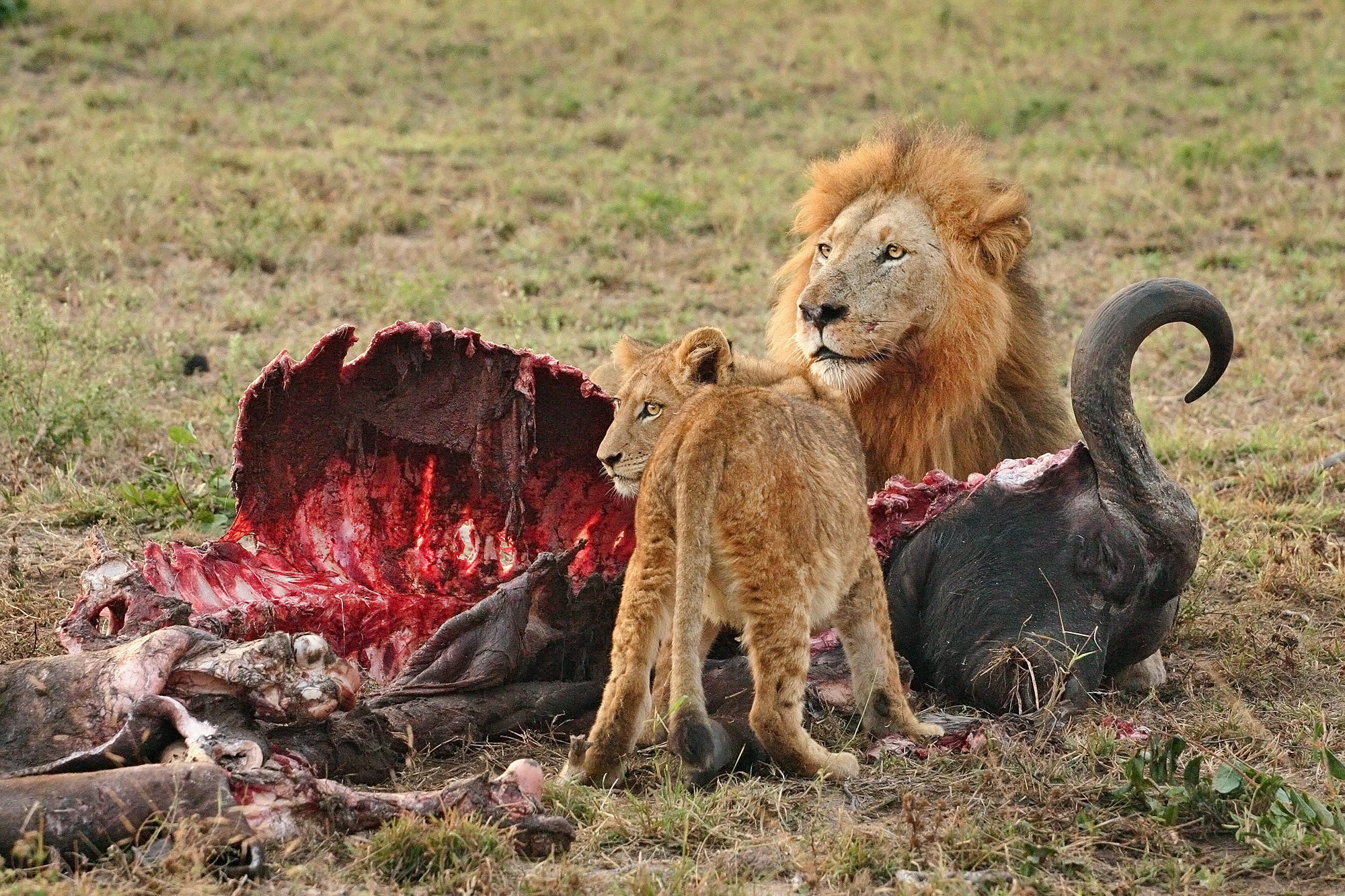hypercarnivore on:
[Wikipedia]
[Google]
[Amazon]
 A hypercarnivore is an animal which has a diet that is more than 70%
A hypercarnivore is an animal which has a diet that is more than 70%
 A hypercarnivore is an animal which has a diet that is more than 70%
A hypercarnivore is an animal which has a diet that is more than 70% meat
Meat is animal flesh that is eaten as food. Humans have hunted, farmed, and scavenged animals for meat since prehistoric times. The establishment of settlements in the Neolithic Revolution allowed the domestication of animals such as chic ...
, either via active predation or by scavenging. The remaining non-meat diet may consist of non-animal foods such as fungi, fruits or other plant material. Some extant examples of hypercarnivorous animals include crocodilians, owls, shrike
Shrikes () are passerine birds of the family Laniidae. The family is composed of 34 species in four genera.
The family name, and that of the largest genus, ''Lanius'', is derived from the Latin word for "butcher", and some shrikes are also know ...
s, eagle
Eagle is the common name for many large birds of prey of the family Accipitridae. Eagles belong to several groups of genera, some of which are closely related. Most of the 68 species of eagle are from Eurasia and Africa. Outside this area, just ...
s, vultures, felids, most wild canids, dolphins, snakes, spiders, scorpions, mantises, marlins, groupers, piranhas and most sharks. Every species in the family Felidae
Felidae () is the family of mammals in the order Carnivora colloquially referred to as cats, and constitutes a clade. A member of this family is also called a felid (). The term "cat" refers both to felids in general and specifically to the ...
, including the domesticated cat
The cat (''Felis catus'') is a domestic species of small carnivorous mammal. It is the only domesticated species in the family Felidae and is commonly referred to as the domestic cat or house cat to distinguish it from the wild members of ...
, is a hypercarnivore in its natural state. Additionally, this term is also used in paleobiology to describe taxa of animals which have an increased slicing component of their dentition
Dentition pertains to the development of teeth and their arrangement in the mouth. In particular, it is the characteristic arrangement, kind, and number of teeth in a given species at a given age. That is, the number, type, and morpho-physiolo ...
relative to the grinding component. Hypercarnivores need not be apex predators. For example, salmon are exclusively carnivorous, yet they are prey at all stages of life for a variety of organisms.
Many prehistoric mammals of the clade
A clade (), also known as a monophyletic group or natural group, is a group of organisms that are monophyletic – that is, composed of a common ancestor and all its lineal descendants – on a phylogenetic tree. Rather than the English term, ...
Carnivoramorpha
Carnivoramorpha ("carnivoran-like forms") is a clade of placental mammals that includes the modern order Carnivora and its extinct stem-relatives.Bryant, H.N., and M. Wolson (2004“Phylogenetic Nomenclature of Carnivoran Mammals.”''First Inter ...
(Carnivora and Miacoidea without Creodonta), along with the early order Creodonta, and some mammals of the even earlier order Cimolesta, were hypercarnivores. The earliest carnivorous mammal is considered to be '' Cimolestes'', which existed during the Late Cretaceous and early Paleogene
The Paleogene ( ; British English, also spelled Palaeogene or Palæogene; informally Lower Tertiary or Early Tertiary) is a geologic period, geologic period and system that spans 43 million years from the end of the Cretaceous Period million yea ...
periods in North America about 66 million years ago. Theropod dinosaurs such as '' Tyrannosaurus rex'' that existed during the late Cretaceous, although not mammals, were obligate carnivores.
Large hypercarnivores evolved frequently in the fossil record, often in response to an ecological opportunity afforded by the decline or extinction of previously dominant hypercarnivorous taxa. While the evolution of large size and carnivory may be favored at the individual level, it can lead to a macroevolutionary decline, wherein such extreme dietary specialization results in reduced population densities and a greater vulnerability for extinction. As a result of these opposing forces, the fossil record of carnivores is dominated by successive clade
A clade (), also known as a monophyletic group or natural group, is a group of organisms that are monophyletic – that is, composed of a common ancestor and all its lineal descendants – on a phylogenetic tree. Rather than the English term, ...
s of hypercarnivores that diversify and decline, only to be replaced by new hypercarnivorous clades.
As an example of related species with differing diets, even though they diverged only 150,000 years ago, the polar bear
The polar bear (''Ursus maritimus'') is a hypercarnivorous bear whose native range lies largely within the Arctic Circle, encompassing the Arctic Ocean, its surrounding seas and surrounding land masses. It is the largest extant bear specie ...
is the most highly carnivorous bear (more than 90% of its diet is meat) while the grizzly bear
The grizzly bear (''Ursus arctos horribilis''), also known as the North American brown bear or simply grizzly, is a population or subspecies of the brown bear inhabiting North America.
In addition to the mainland grizzly (''Ursus arctos horri ...
is one of the least carnivorous in many locales, with less than 10% of its diet being meat.
See also
* Hypocarnivore * List of feeding behaviours * MesocarnivoreReferences
External links
{{feeding Carnivory